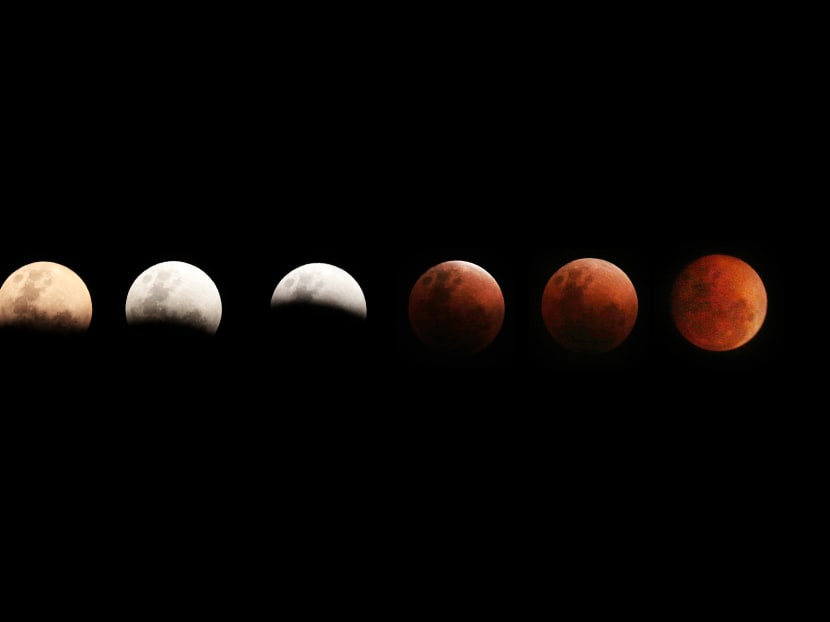Rare super blue blood moon wows sky gazers in S'pore
SINGAPORE — Sky gazers across the island paused their activities on Wednesday night (Jan 31) to catch a glimpse of a rare type of lunar eclipse, the “Super Blue Blood Moon”.

A composite of six images of the 'super blue blood moon' seen over Singapore over a span of two hours from 7:30pm to 9:30pm on Wed, Jan 31, 2018. Photos: Jason Quah/TODAY
SINGAPORE — Sky gazers across the island paused their activities on Wednesday night (Jan 31) to catch a glimpse of a rare type of lunar eclipse: the “Super Blue Blood Moon”.
The moon was visible in Singapore from 7.48pm, when a partial eclipse begins.
At the Singapore Science Centre near Jurong East, thousands gathered for a viewing session from 7.30pm to 10.30pm.
A partial eclipse began at 7.48pm, and the full eclipse began at 8.51pm, but it was covered by some clouds, which cleared moments later. The end of the full eclipse was at around 10.08pm.
For researcher Loo Lit Hsin, this is not the first time that he has seen an eclipse. The 41-year-old has previously caught the solar eclipse when he was in the United States last year.
“This is such a rare event, so my wife and I decide to come here,” said Mr Loo. “After tonight, we have seen at least two eclipses.”
Lab manager Alexa Tan said she brought her seven-year-old son to the Science Centre as he has always been interested in space.
“This is the first time that my husband and I have brought him to see an eclipse,” said the 42-year-old. “He is very excited and I hope that this will be a good experience for him”.
Like all total lunar eclipses, the Earth had cast a darkened red-tinted shadow across the face of its natural satellite.
However, what made Wednesday’s phenomenon unique was that the eclipse unfolded during the rare occasion of a second full moon in a single month – also known as a “blue moon”.
It also occurred during a point in the moon’s orbit at which it had reached its closest position to Earth, thus making it appear larger and brighter in the sky than normal — a “super moon”.
The reddish appearance of the lunar surface was caused by the rays of sunlight passing through Earth’s atmosphere as the moon fell into Earth’s shadow.
The last time all three conditions occurred for a single lunar eclipse was in 1866.
With the rainy conditions recently, some astronomers told TODAY they were relieved the sky cleared when the full eclipse began.
Singapore Science Centre CEO Prof Lim Tit Meng said it is a "rare treat" in Singapore to get sight of an "orangey red moon, naked in the sky with no clouds around it".
"It's such a blessing to see a clear sky. In the tropics it is rare because (the climate) is famous (for) the rain clouds," said Prof Lim. "It's really unusual to look up and see hardly any clouds. So I guess lots of people managed to see the bright moon".
President of The Astronomical Society of Singapore, Albert Ho, agreed. "We were quite worried (at first) for the public because we know they are queing up for this event and we try not to disappoint them," he said. "Weather is something we can't control...luckily (the sky) cleared up".






